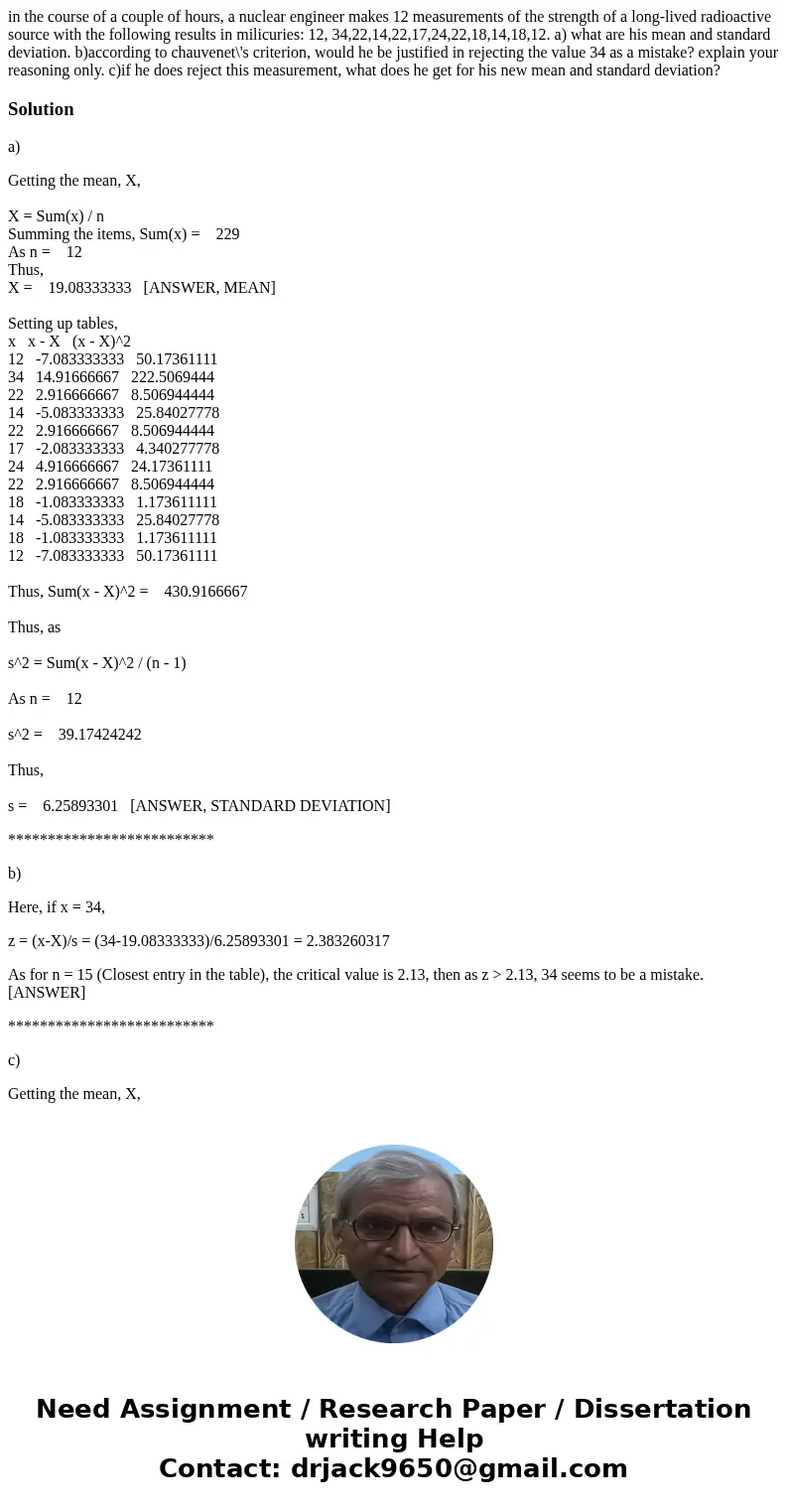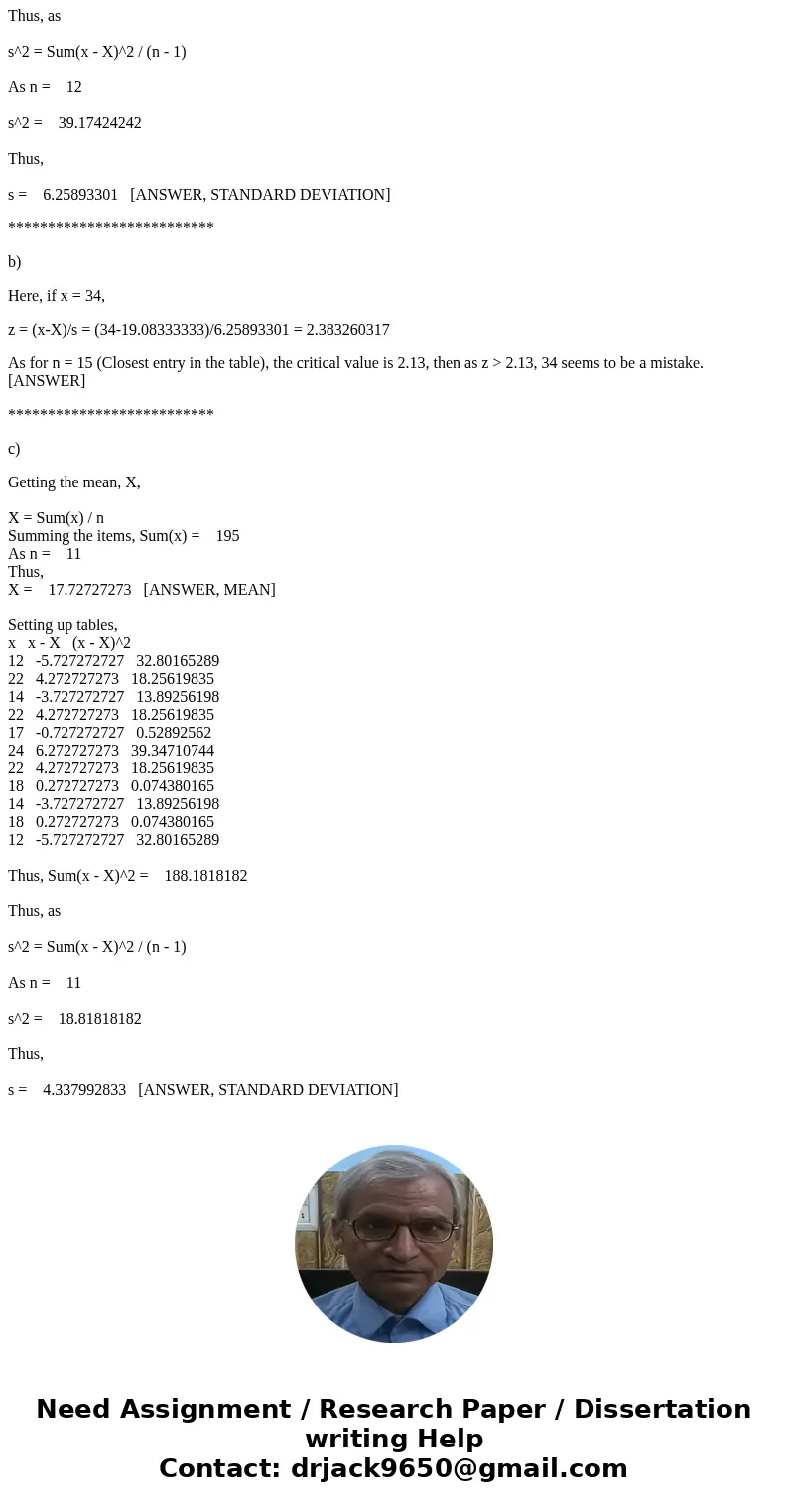in the course of a couple of hours a nuclear engineer makes
in the course of a couple of hours, a nuclear engineer makes 12 measurements of the strength of a long-lived radioactive source with the following results in milicuries: 12, 34,22,14,22,17,24,22,18,14,18,12. a) what are his mean and standard deviation. b)according to chauvenet\'s criterion, would he be justified in rejecting the value 34 as a mistake? explain your reasoning only. c)if he does reject this measurement, what does he get for his new mean and standard deviation?
Solution
a)
Getting the mean, X,
X = Sum(x) / n
Summing the items, Sum(x) = 229
As n = 12
Thus,
X = 19.08333333 [ANSWER, MEAN]
Setting up tables,
x x - X (x - X)^2
12 -7.083333333 50.17361111
34 14.91666667 222.5069444
22 2.916666667 8.506944444
14 -5.083333333 25.84027778
22 2.916666667 8.506944444
17 -2.083333333 4.340277778
24 4.916666667 24.17361111
22 2.916666667 8.506944444
18 -1.083333333 1.173611111
14 -5.083333333 25.84027778
18 -1.083333333 1.173611111
12 -7.083333333 50.17361111
Thus, Sum(x - X)^2 = 430.9166667
Thus, as
s^2 = Sum(x - X)^2 / (n - 1)
As n = 12
s^2 = 39.17424242
Thus,
s = 6.25893301 [ANSWER, STANDARD DEVIATION]
**************************
b)
Here, if x = 34,
z = (x-X)/s = (34-19.08333333)/6.25893301 = 2.383260317
As for n = 15 (Closest entry in the table), the critical value is 2.13, then as z > 2.13, 34 seems to be a mistake. [ANSWER]
**************************
c)
Getting the mean, X,
X = Sum(x) / n
Summing the items, Sum(x) = 195
As n = 11
Thus,
X = 17.72727273 [ANSWER, MEAN]
Setting up tables,
x x - X (x - X)^2
12 -5.727272727 32.80165289
22 4.272727273 18.25619835
14 -3.727272727 13.89256198
22 4.272727273 18.25619835
17 -0.727272727 0.52892562
24 6.272727273 39.34710744
22 4.272727273 18.25619835
18 0.272727273 0.074380165
14 -3.727272727 13.89256198
18 0.272727273 0.074380165
12 -5.727272727 32.80165289
Thus, Sum(x - X)^2 = 188.1818182
Thus, as
s^2 = Sum(x - X)^2 / (n - 1)
As n = 11
s^2 = 18.81818182
Thus,
s = 4.337992833 [ANSWER, STANDARD DEVIATION]


 Homework Sourse
Homework Sourse